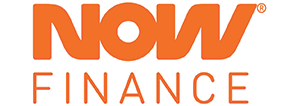
- Car insurance is generally more expensive for financed vehicles because insurers perceive higher risks, such as newer cars, a greater likelihood of claims, potential negative equity, and lender-imposed comprehensive insurance requirements.
- Negative equity poses a financial risk, as a financed car's value may depreciate faster than the loan balance, leaving borrowers owing more than the car is worth in case of a total loss.
- Underinsurance can lead to financial shortfalls, insuring for a low agreed value can lead to disrepancies in the car's value and the insurer may adjust the premium accordingly.
- There are strategies to reduce high insurance premiums, including shopping around, paying down the loan faster, increasing the excess, and considering additional coverage like gap insurance.
A car loan and car insurance are often the two biggest expenses you run into when you're about to purchase a new (or used) car. Before you collect the keys, it's important to consider your insurance options and have a policy ready before you drive away.
Many car loan lenders want you to take out comprehensive car insurance, which covers your own vehicle - and the other driver if you're at fault - in an accident. However this all comes with added costs - and a car with finance often costs more to insure than one without.
We did a comprehensive insurance quote for a new Toyota RAV-4, in suburban Melbourne, for a 30-year old female driver with an insurer that rhymes with Schmingle.
-
Without Finance Owing: $902 annually
-
With Finance Owing: $986
An $84 difference! And this is a conservative example; as we all know, insurers like to charge more if you're younger, have a bad driving history, have a flashy car, or live in a dodgy area - so the discrepancy would only get wider. So, why is this the case?
Know This
Market-value insurance policies are set out by the insurer, and could cover you for less than you anticipated.
Agreed-value is a price that you set, which can lead to higher premiums, and/or a risk of underinsurance.
Why Insurance is More Expensive With a Car Loan
Perceived Risk for Insurer
Insurers assume all sorts of things, using statistics to back them up. It's likely they've crunched the numbers and figured someone with a car loan is more likely to make a claim, have a flashier car, or be a worse driver. Or all three.
On the flipside, they might perceive someone who can buy a car outright less likely to make a claim, or at least be able to afford some repairs themselves.
Risk of Negative Equity
Cars can depreciate quickly, and car loan interest rates can be high. If a car loan is encumbered i.e. under a car loan and you write it off or cause serious damage to the vehicle, there's every chance your car's value is worth less than what you still have to pay on the car loan. This is called negative equity.
While negative equity isn't exactly an insurance risk in itself, in the event of a write off, your lender will want to recoup the residual amount even if the insurer doesn't necessarily deem it to be worth that much at market value. The onus will then likely fall to you.
Risk of Underinsurance
There's every chance your lender and insurer don't see eye-to-eye on the vehicle's value. If you have an agreed price car insurance policy, and you've insured it for $20,000 (as that's all you've asked to borrow, or that's all your lender deems it to be worth) when it is actually worth $23,000, this is called underinsurance. In this case it's underinsured by 13%, and your insurer may charge extra on the premium accordingly.
Mandatory Comprehensive
Many secured car loans demand that the insurance policy you take out is comprehensive. This means it covers your own car in a crash (or a scrape or fender bender), as well as the other vehicle if you're at fault.
Other insurance options include third party, and third party fire and theft, which are cheaper but cover less.
CTP or compulsory third party is as the name suggests, compulsory, and is often paid along with your registration. This doesn't cover your vehicle, but is personal injury liability insurance.
Newer Cars
For most people, you're not likely to finance an old banger from the 1990s, but a new(er) vehicle. Many secured car loans limit the vehicle's age to 5 years at the time of purchase.
As the car is newer, and ostensibly more expensive, this can make your insurance premium more expensive too.
Ways to Combat Higher Insurance Premiums
Shop Around
Unfortunately loyalty likely doesn't pay. Yes there are 'no claims discounts' but they likely aren't as beneficial as getting quotes from various insurers.
Be aware that almost no insurer is exactly alike, so you may pay extra for things like: Choice of repairer; windscreen repair; hire car; new for old vehicles; and more.
It's also advisable to do this about once per year. As you may have noticed, insurers like to increase premiums year after year even though your car is worth less, you're older, and you've been loyal. Go figure.
Reconsider a Balloon Payment
A balloon payment - which can be up to 50% of the car loan value - can be a handy way to reduce your regular repayments. However, it also means there's a stack of money owing (plus interest) that won't be paid off until the end of the car's loan term. This makes it more expensive than if you paid a car loan the normal way.
This can mean you pay more in interest, and also increases your risk in the insurer's eyes. This is because if you write the car off, even if you're a good way into your term, you can owe a lot of money. The risk of underinsurance is also higher as you owe a higher amount, despite the vehicle depreciating.
Consider Car Gap Insurance
Gap insurance, also called shortfall insurance, is an add-on to comprehensive insurance. Your car is losing value all the time and it may not be worth what you still owe on your car loan if it is written off and has to be replaced.
The usefulness of gap or shortfall insurance depends on the terms of the policy, and you need to pay close attention to the terms and conditions. Your gap insurance policy will not pay out if your car insurance doesn't, and you will also need to meet the terms and conditions of the car gap insurance policy.
So, shortfall insurance covers the 'gap'. However, in the end, the savings on your overall insurance premium might not outweigh the cost of the gap insurance premium.
Pay Down Your Car Loan Faster
Once your car loan is paid off, you're no longer under the thumb of your lender. At this point, you might consider adjusting your coverage to better suit your financial situation and the current value of your vehicle.
However, it's essential to weigh the risks, as reducing coverage can expose you to greater financial liability in the event of an accident.
In addition, by paying down your car loan faster, you save in interest, pay down the principal, and limit the risk of falling into negative equity. Just make sure your car loan allows you to do this.
Increase Your Excess
If you fancy yourself as a safe driver or one not likely to back into a pole, you may like to increase your excess. This is the cash you pay when making a claim.
A more expensive excess increases the threshold at which you're likely to make a claim. So if your excess is raised to $2,000, you'd have to cause at least $2,000 worth of damage to make it worth your while.
To compensate the insurer will lower your premium cost. For a minor ding or scrape, you might consider going outside your insurer.
Of course, you must be able to afford this excess, and it can be a pain if you are in a crash - through no fault of your own - and the other party drives off without leaving their details.
Install Security Features
More common these days is the advent of insurers giving discounts if you have safety features installed such as dashcams, immobilisers, and alarms. This deters thieves, while dashcams make it easier to keep a record if you're in an accident.
Further, some insurers offer to install a monitoring device in your car, which monitors speed, braking and other habits. If you're a safer driver, you may get a cheaper policy.
First written by Sharvani Mehrish in June 2019.
Image by Drazen Zigic via Freepik.




